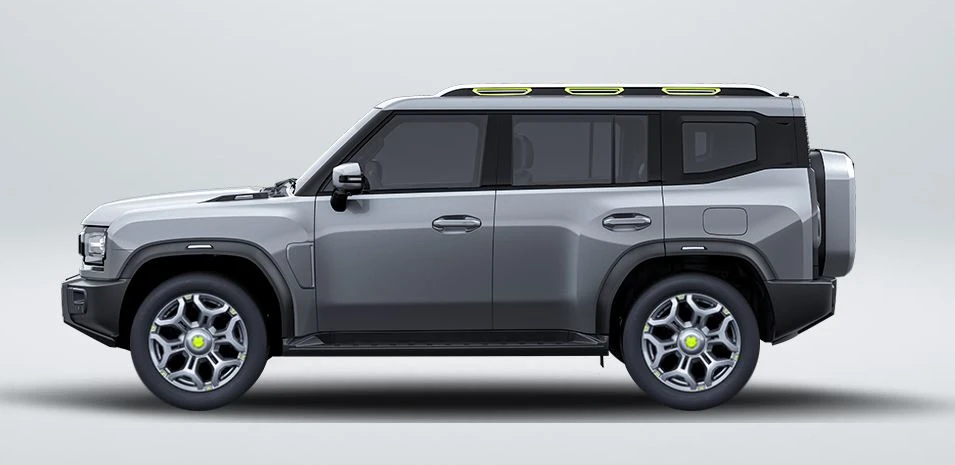Buy A New Car
New Cars Aren’t Always Super-Expensive!

If you are looking to buy a new car, and your budget allowed a price ceiling of $40k ($40,000), then there is a plethora of opportunity for you out there at the car lot. It has been interesting to observe the changing winds in the car industry. The onset of a wide variety of more affordable new electric vehicles (EVs) becoming available to buyers has meant that the opportunity to own a new EV is becoming much more attainable. There are still some EV issues that need to be seen to before living with an EV becomes a seamlessly easy way of life; however, for some people, the switch to owning an EV has been a good move. If you can charge your vehicle at home, and most (if not all) of your travel is short distances in a city/town environment, then you’re well on the way to being a happy EV convert. Or maybe you are reading this and are feeling smug that you are already a happy convert.
Definitely, there are also many more new hybrid vehicles (vehicles that use battery power to enhance the fuel economy of the internal combustion engine (ICE)) that you can buy. In my humble opinion, these are the best new vehicles to buy, particularly if you want good fuel economy and low emissions but spend time travelling between townships and cities. They offer the best of both worlds. Let’s face it: Australia’s EV infrastructure is improving but still has a long way to go before it is anywhere near perfect.
There are still some great new ICE vehicles that use petrol or diesel on the market for a decent price. Fuel economy has gotten better and better for these types of vehicles, so they still offer a new-car buyer a solid purchase. Thus, particularly if you are employed in any trade that requires travelling plenty of kms, an ICE vehicle or hybrid can’t yet be beaten on practicality. You only need to look at the latest new car sales list to read that ICE and Hybrid utes and SUVs still remain the top purchases.
OK, so what’s out there for under $40k (at the time of writing?
Hybrid Cars/SUVs
- GWM Haval Jolion SUV Hybrid
- GWM Haval H6 SUV Hybrid
- Hyundai i30 Sedan Hybrid
- Hyundai Kona SUV Hybrid
- MG3 Hatch Hybrid
- Toyota Camry Sedan Ascent Sedan Hybrid
- Toyota Corolla Hatch Hybrid
- Toyota Corolla Sedan Hybrid
- Toyota Corolla Cross SUV GX Hybrid
- Toyota Yaris Cross SUV Hybrid
- Toyota Yaris Hatch Hybrid
ICE Cars/SUVs/Utes
- Chery Tiggo 7 Pro SUV
- Chery OMODA 5 SUV
- Fiat 500 Hatch Dolcevito
- Ford Puma SUV
- GWM Ute
- Honda CR-V SUV
- Honda HR-V SUV
- Honda ZR-V SUV
- Hyundai i30 Hatch
- Hyundai Venue SUV
- Hyundai i20 Hatch N
- Isuzu D-MAX Cab Chassis SX High Ride Ute
- Kia Sportage SUV S
- Kia Cerato Hatch
- Kia Cerato Sedan
- Kia Picanto Hatch
- Kia Seltos SUV
- Kia Stonic SUV
- LDV T60 Ute Max Pro
- LDV D90 SUV
- LDV G10 Van+
- LDV V80 Van
- Mahindra PIK-Up Ute
- Mahindra PIK-UP Cab Chassis
- Mahindra PIK-Up Ute Light Truck S+ 4×4
- Mahindra XUV700 SUV 4×4
- Mazda CX-5 SUV
- Mazda 3 Hatch
- Mazda CX-30 SUV
- Mazda CX-3 SUV
- Mazda 2 Hatch
- Mazda 3 Sedan
- Mazda 6 Sedan
- Mazda BT-50 Cab Chassis XS Ute
- Mazda 2 Sedan
- MG ZS SUV Excite
- MG MG5 Sedan
- MG ZST SUV
- MG HS SUV
- Mitsubishi Eclipse Cross SUV
- Mitsubishi ASX SUV
- Mitsubishi Triton Cab Chassis GLX Ute
- Nissan Navara Cab Chassis SL Ute
- Nissan Juke SUV
- Nissan QASHQAI SUV ST
- Renault Captur SUV
- Skoda Kamiq SUV
- Skoda Karoq SUV
- Skoda Scala Hatch 85 TSI Ambition
- Skoda Fabia Hatch Monte Carlo Edition 150
- SsangYong Musso Ute ELX
- SsangYong Korando SUV
- Suzuki Swift Hatch
- Suzuki Vitara SUV
- Suzuki Ignis SUV
- Suzuki S-Cross SUV
- Toyota C-HR SUV GXL
- Toyota Hilux Ute Workmate
- Toyota Hilux Cab Chassis
- Toyota RAV4 SUV GX
- Volkswagen Polo Hatch
- Volkswagen T-Roc SUV City Life
- Volkswagen T-Cross SUV
EVs (Hatchback/SUV)
- GWM Ora Standard Hatch
- BYD Dolphin: Hatch
- MG ZS EV Excite SUV
- MG4 Excite Hatch
- Nissan Leaf Hatch

Some of us are on an even tighter budget. We would love a new a car, but… Well, here’s some good news:
Six new cars under $25,000 (All ICE)
- MG3 Hatch
- Kia Piccanto Hatch
- MG ZS SUV
- Kia Stonic SUV
- Suzuki Ignis SUV
- MG MG5 Sedan
These prices are typical, but have a chat with the helpful team here at Private Fleet, as we may be able to land you an absolutely stellar deal. Also check out our reviews to get more details.

4WD and AWD

Getting the best grip on the road or terrain is what will get you moving forwards from A to B in the shortest time. Ever since the invention of the first cars, two-wheel-drive has been the mainstay for delivering the engine’s power out to the wheels. At first, two-wheel drive was usually via the rear wheels, as it was much simpler to run a drive shaft from the engine at the front of the car back to the rear wheels to get grip from the rear wheels and to let the front wheels have the job of steering the vehicle.
In saying that, there is also history of 4WD being experimented with back as early as the late 1800s in combination with a traction engine, and, of course, in World War II, the 4WD Willys Jeep was a game-changer.

Once mechanical engineering and quality improved over time, the concept of having the engine over the front axle and the front wheels as the driving wheels as well as for steering the vehicle lowered production costs. A combination of rear-wheel-drive and front-wheel-drive cars were available as a matter of course right up to the 1970s and 1980s. Through the 1990s up until the present day, it was more common to see front-wheel-drive cars for everyday driving.
However, it was the 1980s that proved to be a very innovative period in automotive design and mechanical engineering. The greatest advancement in road-going cars was arguably the use of four-wheel-drive to establish greater levels of grip. As racing and supercars demanded faster cars, the need to control all that power (and actually make better use of it) was essential for winning, especially as there was an ever-increasing number of high-performance cars being pulled out of roadside hedges or being wrapped around power poles.
Enter Audi. Audi’s Quattro technology marked a significant moment in high-performance cars’ and supercars’ history. The Audi Quattro’s technology was essentially the dawn of the modern supercar’s 4WD system, and when Audi entered the World Rally Championship in 1981 with their Audi 80 Quattro car, they were unbeatable. The second-place car was over twenty minutes behind the race-winning Audi!
What is the difference between 4WD and AWD?
This is a good question to answer, because there are numerous new cars of all shapes and sizes available with AWD or 4WD. Generally speaking, four-wheel-drive (4WD) is the older off-road system that has the power split 50:50 front to rear. Add a diff-lock into a 4WD system, and these are off-road kings. Four-wheel-drive can be disengaged so that just two-wheel-drive (2WD) can be used on easier terrain, including for when you’ve finished your off-road adventure and you just want to head back home on the tarmac with 2WD only.
The basic principle of an all-wheel-drive (AWD) system is that it can deliver the optimum level of torque to each wheel individually, thus giving the best possible drive and traction. AWD systems tend to be permanently engaged, but with the power split front to rear, along with individual wheels being variable according to what each wheel is sensing and therefore demanding at the time. AWD systems are more complex in that they use sensors which send precise information and values of each wheels’ speed, torque, wheel slip/spin, brake pressure, and steering input to the AWD’s central control system. The control system then adjusts the torque supplied to each wheel.
Land Rovers and many other new serious off-road vehicles use AWD systems with various diff-locking abilities, which also make them real off-road kings. Four-wheel-drive systems are simpler in nature and are thus simpler and cheaper to fix than more complex AWDs. That said, many manufactures like Subaru know how to make solid, dependable AWD systems for their cars and SUVs that are mainly aimed at everyday on-road use and trips up to the ski fields, but with the credentials for performing well even in some fairly serious off-road terrain.
If you live in a part of the world where gravel roads and rainy seasons collide, then an AWD vehicle with decent ground clearance should be parked up your driveway. If your day includes a trek out to the building site, feeding out to stock, or traversing any serious off-road terrain, then a heavy-duty 4WD or AWD vehicle will be your companion. The good news is there are plenty of these sorts of vehicles about, many of which can be bought new at a good price via Private Fleet.

Is That Second-Hand Car Reliable?
So you’re in the market for a new vehicle, but don’t want to dish out top dollar. You turn to the second-hand market, wondering if you can score yourself a bargain. What should you be on the lookout for? Is there any way to determine how reliable a used car is?
Due Diligence
The best place to start is with research. Look into which makes and models are known for their reliability. Consider your social circle, who drives what, and if they’ve encountered any problems. Jump on message boards and look for opinions from owners. Read motoring reviews, which should offer insights into common issues and the overall satisfaction of other owners.
Once you’re out and about visiting car yards or private sellers, begin to compare the options you narrow down to. When it comes to reliability, the first thing you want to do is check the history of the cars you are looking at, so turn to vehicle history reports, service records, and check the relevant register in your state or territory to ensure the car hasn’t been written off in the past.
Inspecting the Vehicle
Begin with a walk-around to look for signs of damage, rust, or mismatched paint that might indicate previous repairs. Check the condition of the tyres to ensure they have sufficient tread depth and that there are no signs of uneven wear, which could signal alignment issues or suspension problems. While you’re at it, make sure you also inspect the lights, windows, and mirrors to ensure they are functional and free from cracks or any other damage.
Lift the bonnet and examine the engine bay for any signs of leaks, corrosion, or worn belts and hoses. The oil, coolant, and transmission fluid should be at appropriate levels and appear clean. Dirty or low fluids should prove cause for concern, as it may signal a neglectful owner.

There is only so much that an untrained individual can look for when inspecting under the bonnet, so ask a trusted mechanic or third-party inspection service to perform a more detailed inspection. These individuals may be able to identify potential issues that might not be apparent during your inspection and test drive.
Inside the vehicle, make sure that key features like air conditioning, heating, infotainment system, power windows and so forth are all in working order. If you fail to pick up any problems at this stage, it could lead to complications later on, and a big bill.
Driving the Vehicle
Arguably the most telling aspect of evaluating a second-hand car is the test drive. Pay attention to how the car starts, accelerates, and handles. The engine should start easily and run smoothly without unusual noises. Check the brakes for responsiveness and listen for any squeaking or grinding sounds, which can indicate worn brake pads or rotors. Test the steering for smoothness and ensure there are no vibrations or pulling to one side.
Is it the Right Car for You?
While you can never be certain that you’re not acquiring a lemon, you can form some idea as to the likely reliability of a second-hand vehicle by completing diligent research, inspecting the vehicle, and driving the car as part of a test drive.
It’s wise to follow these steps to ensure that you make an informed decision, reducing the risk of purchasing a used car that turns out to be a lemon.
Introducing The Jetour

I’ve always loved the exterior of the Land Rover Defender, whether old or new. Its boxy shape and rugged appearance are perfectly crafted for off-roading. The short front and rear overhangs are just perfect for clearing steep entry and exit points on a slope. Of course, there is also the legendary Defender’s 4WD powertrain that is the rock of what makes this an immensely capable 4×4 off-road machine. However, there is another vehicle coming to Australia with that same chunky, boxy shape and talented off-road skills. This new machine comes to us from China and will be available to buy down under in 2025. Let’s take a closer look, and by this, I mean you’ll need to look really closely to make sure it is a Jetour and not a Defender. A big hint is to read the brand name that runs across the front of the bonnet!
It is said that we all have a double of ourselves somewhere in the world (I know I do). This double basically looks like us. Land Rover Defender’s double or doppelganger (German for “double walker”) would surely have to be the new Jetour. The Jetour is a vehicle that was designed to be a luxury crossover brand in 2018 and is the creation born from the Chery Holding Group, often known simply as Chery. Chery is an automotive group currently based in the eastern Chinese city of Wuhu. Born in 1997, Chery has grown and developed in a diversified manner with automobiles as its primary business. Over time, Chery have created automobiles, gotten involved in automotive parts, finance, property and modern services. Chery now has over 300 member-enterprises; these include Chery Automobile, Chery Commercial Vehicle, Chery Jaguar Land Rover, Chery Finance and Chery Technology.
The Jetour T2 large off-roader does look really good in the metal, with its square boxy body shape, bold wheel arches and big rubber, high ground clearance, a swinging tailgate with a spare tyre on the outside, big solid bumpers, and an interior that won’t mind getting dirty from an adventure Outback.
Similar again to how Land Rover has designed its latest Defender, the 2024 Jetour T2 is built around a monocoque body, which is a design that offers loads of structural rigidity and stiffness for tackling the rigours of serious off-roading. The monocoque body is the perfect solid foundation for the Jetour T2 4×4’s advanced all-independent chassis. An independent suspension means that all four wheels can drop and ride over large obstacles individually and independently of what the other three wheels are doing at the same time. This enhances the ability to obtain maximum traction at each wheel, perfect for progressing through tricky and slippery terrain.
The new Jetour will come with the option of either a 1.5-litre or a 2.0-litre turbo petrol engine to power the 4×4, and the engine’s power is sent through a seven-speed dual-clutch automatic transmission for ensuring optimum engine torque is harnessed at all times. Having a ground clearance rated at 220 mm, and with the engine’s drive sent to all four wheels via the full-time 4×4 system, this is an exciting new off-road SUV for the Adventurer needing a new vehicle to get them to a remote location.
We’re looking forward to it, and be sure that we’ll review it fully when it makes it over here.